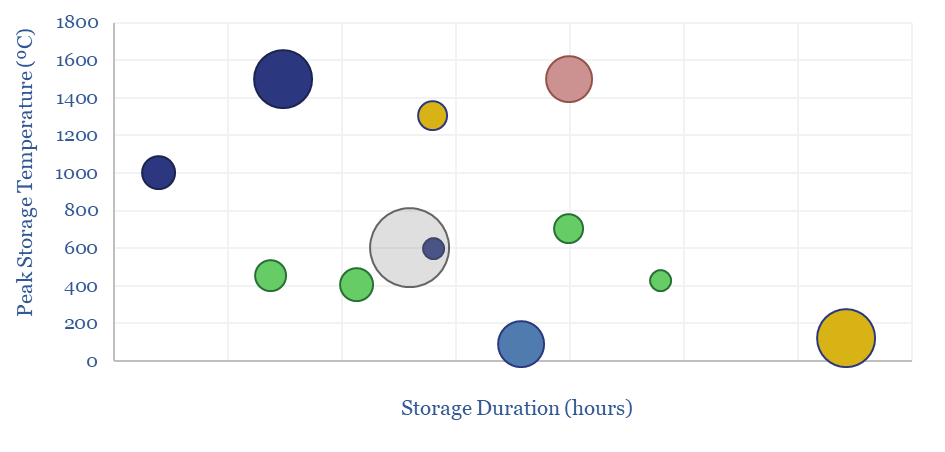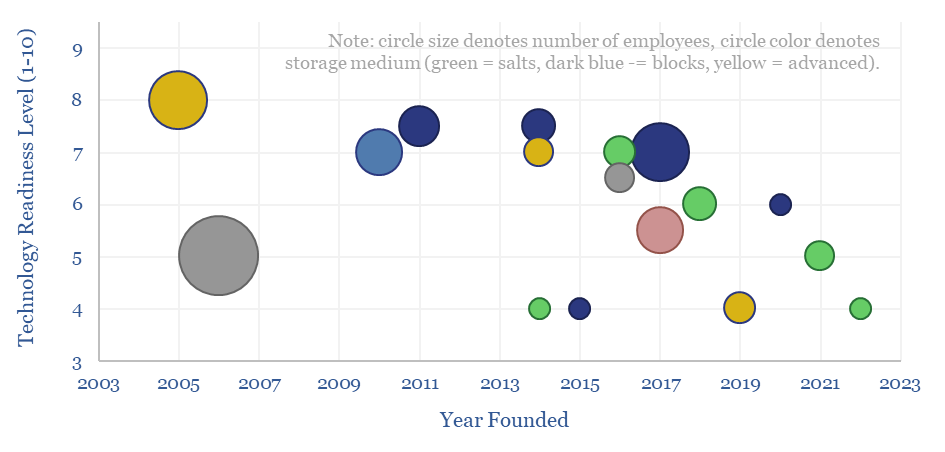This data-file is a screen of thermal energy storage companies, developing systems that can absorb excess renewable electricity, heat up a storage medium, and then re-release the heat later, for example as high-grade steam or electricity. The space is fast-evolving and competitive, with 17 leading companies progressing different solutions.
Thermal energy storage solutions aim to help integrate solar and wind into power grids, by absorbing excess generation that would otherwise be curtailed, and then re-releasing the heat later when renewables are not generating.
Across the 17 leading thermal energy storage companies, the average one was founded in 2015, has c50 employees, is at TRL 6 and aims to convert excess renewable electricity into 750ºC heat.
Thermal losses are usually limited to 1-2% per day, and these systems have the ability to re-release the heat at MW-scale over an average period of c15 hours, in a system that will last c30-years. The data-file tabulates disclosures into these different dimensions.

Different solutions. Around one-third of the companies are using molten salt as a heat storage medium, one third are using blocks or bricks, and one-third are using other advanced materials.
Details are tabulated for each company, showing the variability across all of these parameters, plus 3-10 lines of notes, from company materials, which stood out as interesting to us.
Leading thermal energy storage companies in the screen include Kyoto Group, Rondo Energy, SunAmp, Eco-Tech Ceram, Energy Nest and Antora Energy, plus fifteen other firms.
This screen is discussed in our overview of thermal energy storage. It also feeds into our key conclusions on energy storage.

